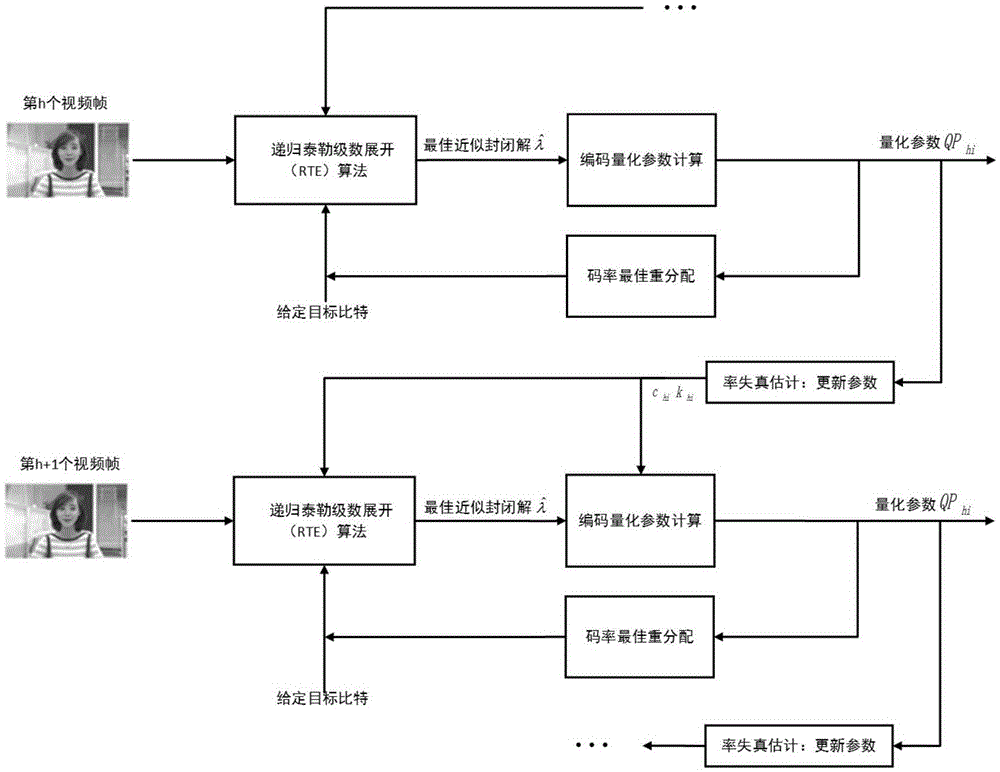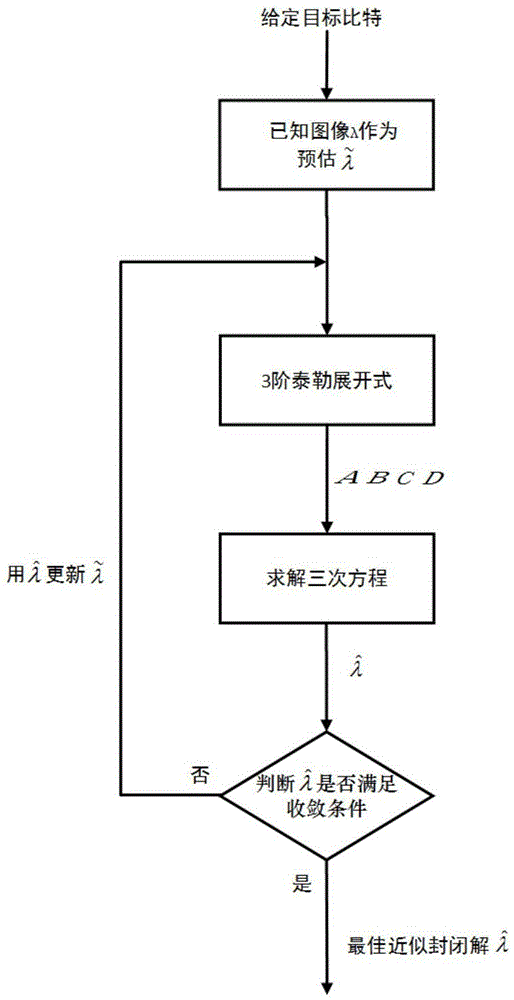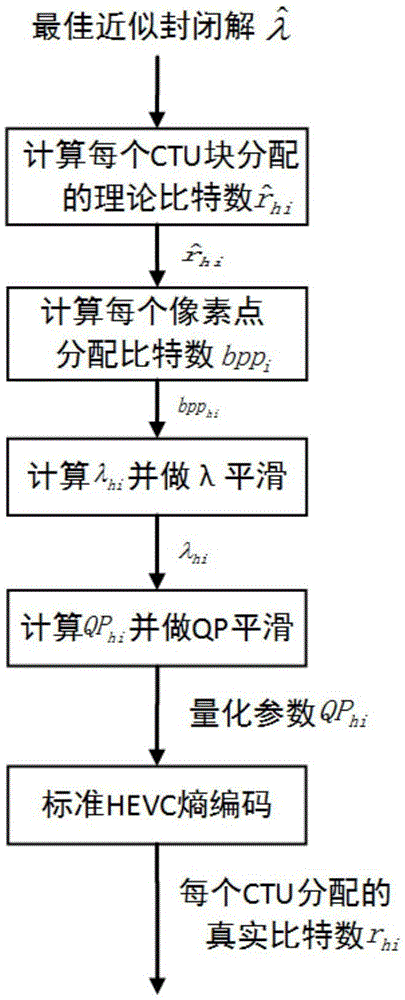HEVC (High Efficiency Video Coding) CTU (Coding Tree Unit) grade code rate control method based on optimal bit allocation
A bit rate control and bit allocation technology, applied in the field of video coding, can solve the problem of no optimal bit allocation and achieve the effect of small approximation error and low coding complexity
- Summary
- Abstract
- Description
- Claims
- Application Information
AI Technical Summary
Problems solved by technology
Method used
Image
Examples
Embodiment
[0062] Take a section of video 'kimono' which is coded separately using the method of the present invention and using the original R-λ rate control mechanism as an example. Figure 5 Indicates the relationship between the brightness peak signal-to-noise ratio (Y-PSNR) and the bit rate per frame. It can be seen from the figure that the video coded using the OBA mechanism of the present invention performs better than the original R-λ rate control mechanism in terms of Y-PSNR.
[0063] Figure 6 and Figure 7 Indicates the subjective quality comparison of the video frames encoded by the two methods. Figure 6 It is a frame of image encoded using the original R-λ rate control mechanism, Figure 7 It is the same frame of image coded by the method of the present invention, from which we can see the advantages of the present invention in terms of subjective quality comparison.
PUM
 Login to View More
Login to View More Abstract
Description
Claims
Application Information
 Login to View More
Login to View More - R&D
- Intellectual Property
- Life Sciences
- Materials
- Tech Scout
- Unparalleled Data Quality
- Higher Quality Content
- 60% Fewer Hallucinations
Browse by: Latest US Patents, China's latest patents, Technical Efficacy Thesaurus, Application Domain, Technology Topic, Popular Technical Reports.
© 2025 PatSnap. All rights reserved.Legal|Privacy policy|Modern Slavery Act Transparency Statement|Sitemap|About US| Contact US: help@patsnap.com



